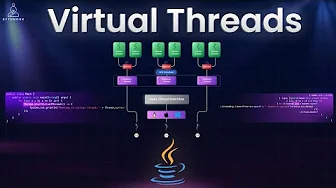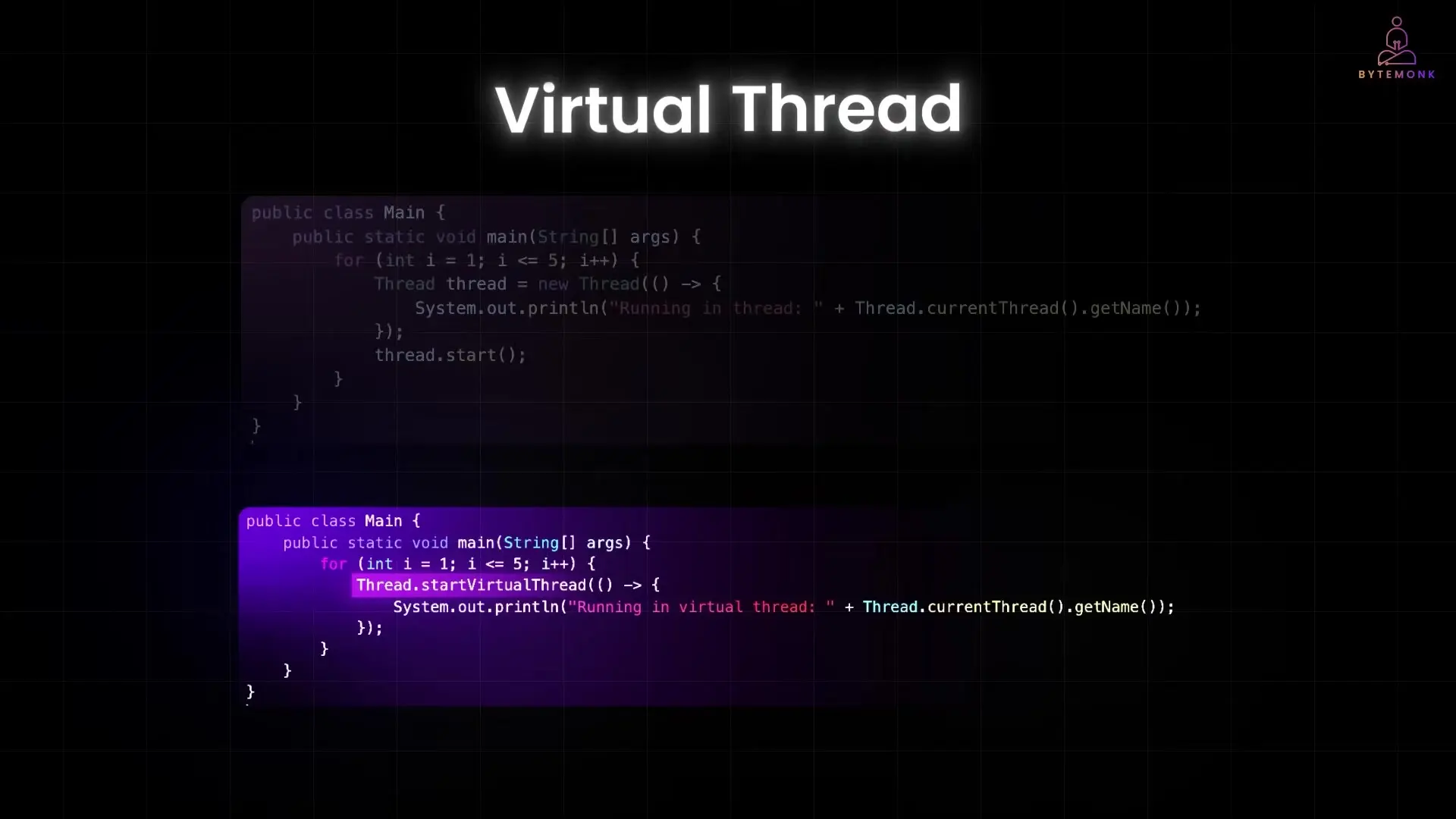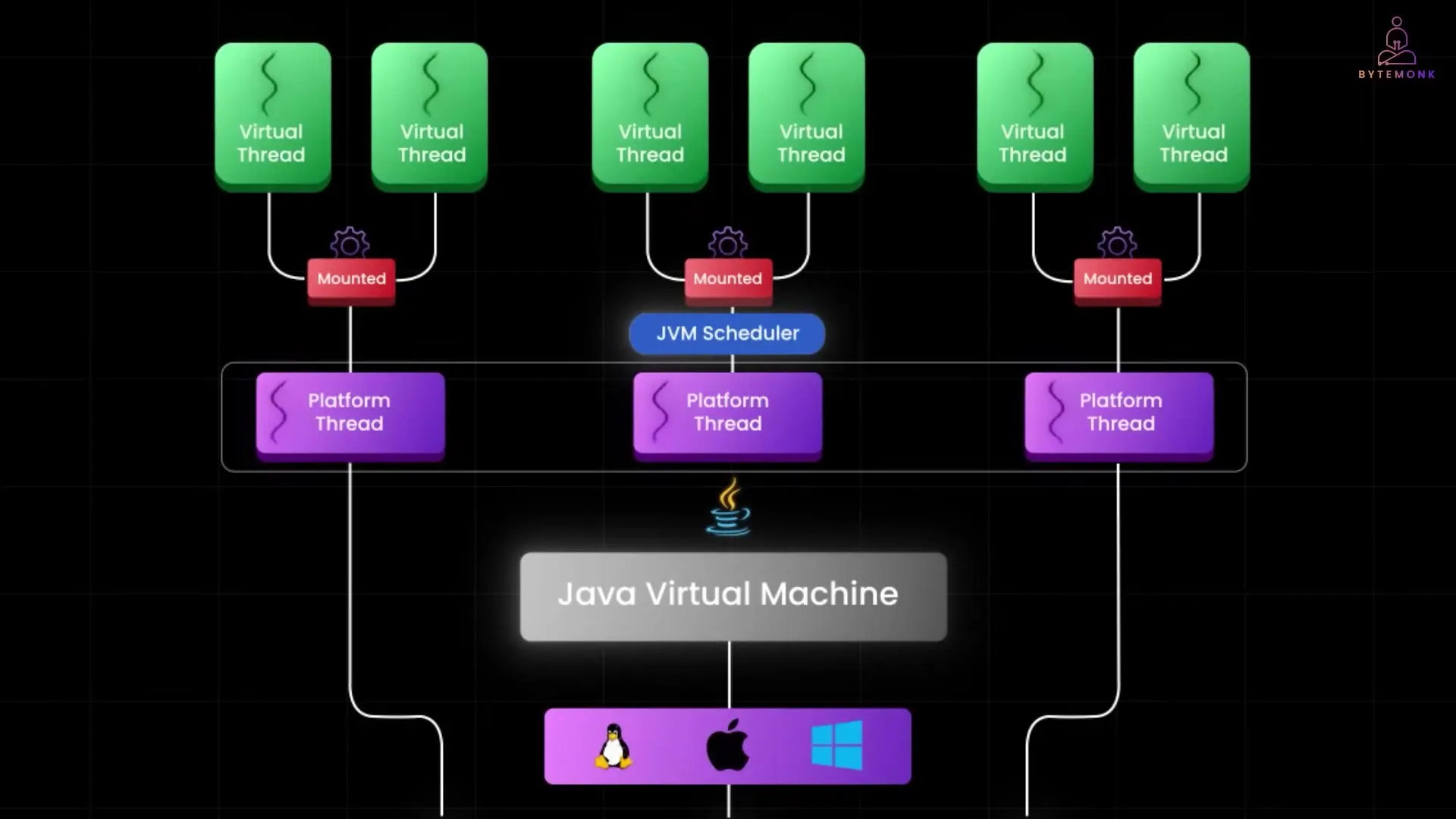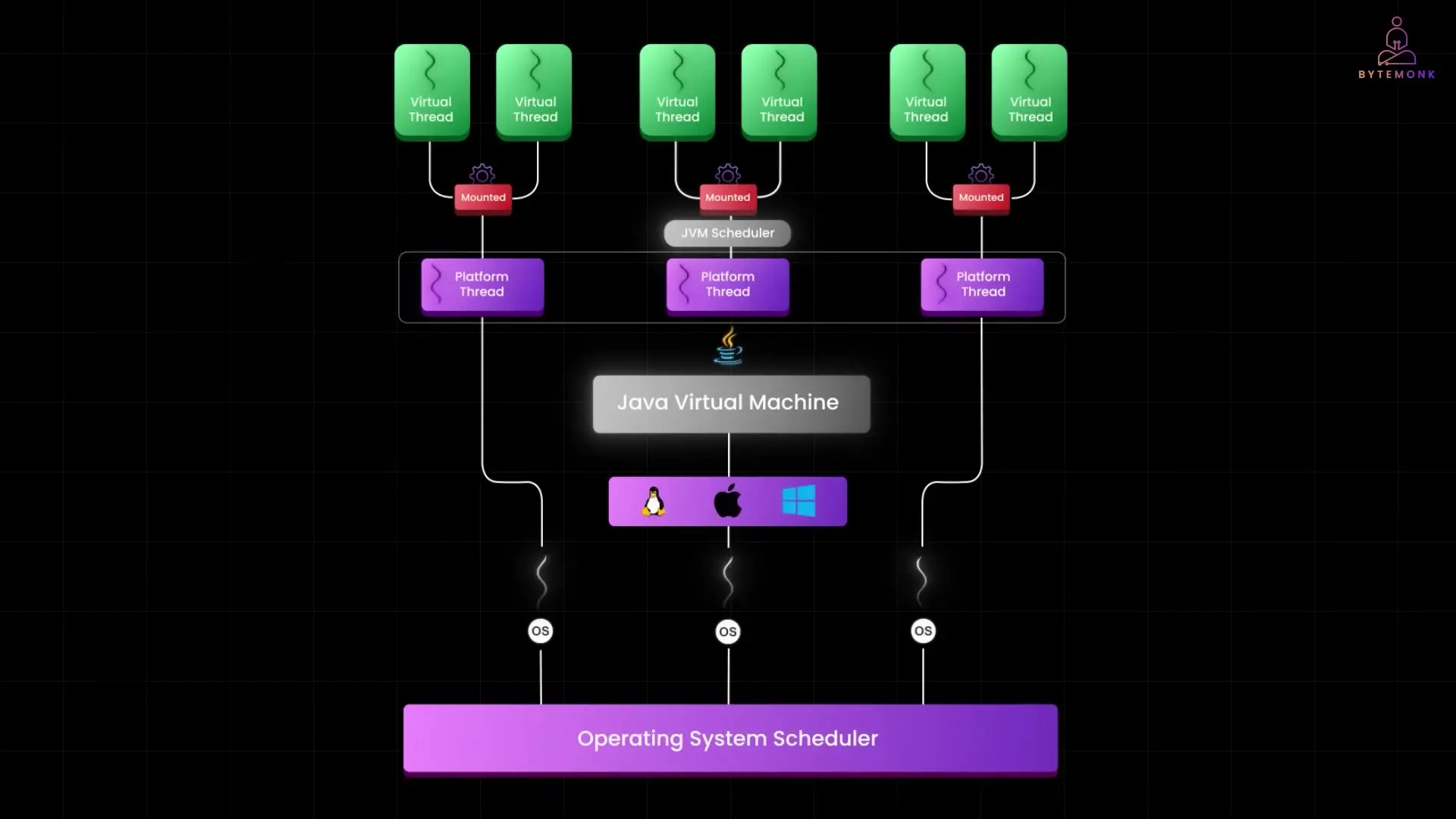
Java threads are fundamental to building concurrent applications that can handle multiple tasks simultaneously. Whether you're developing web servers, processing data in parallel, or building responsive applications, understanding thread management is crucial for creating efficient, scalable software. With the introduction of virtual threads, Java has taken a significant leap forward in how it handles concurrency.
The Limitations of Traditional Platform Threads
In traditional Java applications, each time you create a new thread using the standard Thread class, it maps directly to an operating system thread. These are called platform threads, and they come with significant overhead:
- Each platform thread consumes approximately 1MB of memory
- They are managed directly by the operating system
- The number of threads is limited by available system resources
- Context switching between threads becomes expensive as numbers grow
This approach works well for applications with a limited number of concurrent tasks or CPU-bound operations. However, it quickly becomes problematic when scaling to handle thousands of concurrent operations, such as in web servers handling numerous HTTP requests simultaneously.
When you try to create thousands of platform threads, you're essentially asking the operating system to manage thousands of separate execution contexts. This leads to memory exhaustion, increased context switching overhead, and ultimately, performance degradation.
Enter Virtual Threads: Lightweight Concurrency
Virtual threads, introduced as a preview feature in JDK 19 and fully supported in JDK 21, offer a revolutionary approach to concurrency in Java. Unlike platform threads, virtual threads are managed by the Java Virtual Machine (JVM) rather than the operating system.

The implementation is remarkably simple. Instead of using new Thread(), you can create a virtual thread with Thread.startVirtualThread(). This small change in syntax brings massive benefits in terms of performance and scalability.
// Traditional platform thread
Thread platformThread = new Thread(() -> {
System.out.println("Running on a platform thread");
});
platformThread.start();
// Virtual thread
Thread virtualThread = Thread.startVirtualThread(() -> {
System.out.println("Running on a virtual thread");
});Virtual threads are extremely lightweight, with minimal memory footprint compared to platform threads. This means you can create thousands or even millions of virtual threads without overwhelming your system resources.
How Virtual Threads Work: The JVM Scheduler
The magic behind virtual threads lies in how they're scheduled and managed by the JVM. Here's what happens under the hood:

- Virtual threads are created and managed by the JVM scheduler
- The JVM maintains a small pool of actual OS (platform) threads
- When a virtual thread needs to execute, it gets "mounted" onto an available platform thread
- If a virtual thread makes a blocking call (like I/O operations), the JVM automatically unmounts it from the platform thread
- The platform thread is then free to pick up another runnable virtual thread
- The paused virtual thread waits without consuming any OS resources
- When the blocking operation completes, the virtual thread gets remounted on any available platform thread and continues execution
This mounting and unmounting process is completely transparent to developers. Your code remains simple and straightforward, following the familiar thread-based programming model, while the JVM handles all the complexity of scheduling and resource management.

The operating system isn't even aware that virtual threads exist. From its perspective, it's only managing a small number of OS threads, while the JVM is efficiently juggling potentially millions of virtual threads on top of them.
Java Virtual Threads Performance: Benchmark Results
The performance improvements with virtual threads are substantial, especially for I/O-bound applications. Benchmarks show that applications using virtual threads can handle significantly more concurrent connections with the same hardware resources compared to traditional thread models.
For example, a web server that might handle 500 concurrent requests with platform threads can potentially scale to tens or hundreds of thousands of concurrent requests with virtual threads, all while maintaining simple, synchronous code patterns.
Ideal Use Cases for Virtual Threads
Virtual threads shine brightest in I/O-bound scenarios where tasks spend most of their time waiting for external resources. Some ideal use cases include:
- Web servers handling numerous HTTP requests
- Microservices making multiple API calls
- Database-intensive applications
- File processing systems
- Chat applications with many concurrent users
- Batch processing jobs with parallel operations
For these types of applications, virtual threads allow you to write straightforward synchronous code without sacrificing scalability. You can create a virtual thread for each user request or task, without worrying about thread pool sizing or complex asynchronous programming patterns.
When Virtual Threads May Not Be the Best Choice
While virtual threads are transformative for many applications, they're not a universal solution. There are scenarios where they offer little advantage over platform threads:
- CPU-bound tasks (like image processing or data crunching)
- Applications that rely heavily on thread-local variables
- Code that depends on thread identity being preserved across operations
- Situations where threads need to perform long-running computations without yielding
For CPU-intensive operations, virtual threads offer minimal benefits since they still consume CPU resources and cannot be unmounted during computation. The primary advantage of virtual threads is their efficiency during blocking operations, not during active computation.
Java Virtual Threads vs. Other Concurrency Models
How do Java's virtual threads compare to other concurrency approaches like Go's goroutines or asynchronous programming models? The concept is similar to goroutines in Go, offering lightweight concurrent tasks managed by the runtime rather than the OS. However, Java's implementation maintains backward compatibility with existing code while providing similar scalability benefits.
Compared to asynchronous programming models with callbacks or reactive streams, virtual threads offer a more intuitive programming model. Developers can write sequential, blocking code that's easier to read and maintain, while still achieving the scalability benefits of asynchronous approaches.
Best Practices for Using Virtual Threads
- Use virtual threads for I/O-bound workloads where tasks spend significant time waiting
- Avoid using thread-local variables with virtual threads unless absolutely necessary
- Don't mix virtual and platform threads in ways that could lead to blocking platform threads
- Be cautious with code that assumes thread identity preservation
- Consider virtual threads for new development, especially for high-concurrency applications
- Test thoroughly when migrating existing applications to use virtual threads
Java Virtual Threads Example: Simple Web Server
Here's a simplified example of how you might implement a basic web server using virtual threads:
import java.io.IOException;
import java.net.ServerSocket;
import java.net.Socket;
public class VirtualThreadWebServer {
public static void main(String[] args) throws IOException {
try (var serverSocket = new ServerSocket(8080)) {
while (true) {
Socket socket = serverSocket.accept();
// Handle each client connection in a separate virtual thread
Thread.startVirtualThread(() -> {
try {
handleClient(socket);
} catch (IOException e) {
e.printStackTrace();
}
});
}
}
}
private static void handleClient(Socket socket) throws IOException {
// Read request, process it, and send response
// This method can use blocking I/O operations
// without worrying about thread pool exhaustion
// ...
socket.close();
}
}In this example, each client connection is handled by a dedicated virtual thread. The server can potentially handle thousands of concurrent connections without the need for complex thread pool configuration or asynchronous programming patterns.
Conclusion: The Future of Java Concurrency
Virtual threads represent a significant evolution in Java's concurrency model, offering the scalability of asynchronous programming with the simplicity of synchronous code. For I/O-bound applications, they eliminate the need to choose between code readability and performance.
As frameworks like Spring Boot and other Java libraries adopt virtual threads, we can expect to see more Java applications scaling to handle massive concurrency without complex code or extensive tuning. This shift makes Java more competitive for building high-throughput, scalable systems while maintaining the language's emphasis on readability and maintainability.
The introduction of virtual threads doesn't just improve performance—it fundamentally changes how we approach concurrency in Java applications. By embracing this new model, developers can write simpler, more maintainable code that scales efficiently to meet the demands of modern, high-concurrency applications.
Let's Watch!
Java Virtual Threads: The Game-Changer for High-Concurrency Applications
Ready to enhance your neural network?
Access our quantum knowledge cores and upgrade your programming abilities.
Initialize Training Sequence